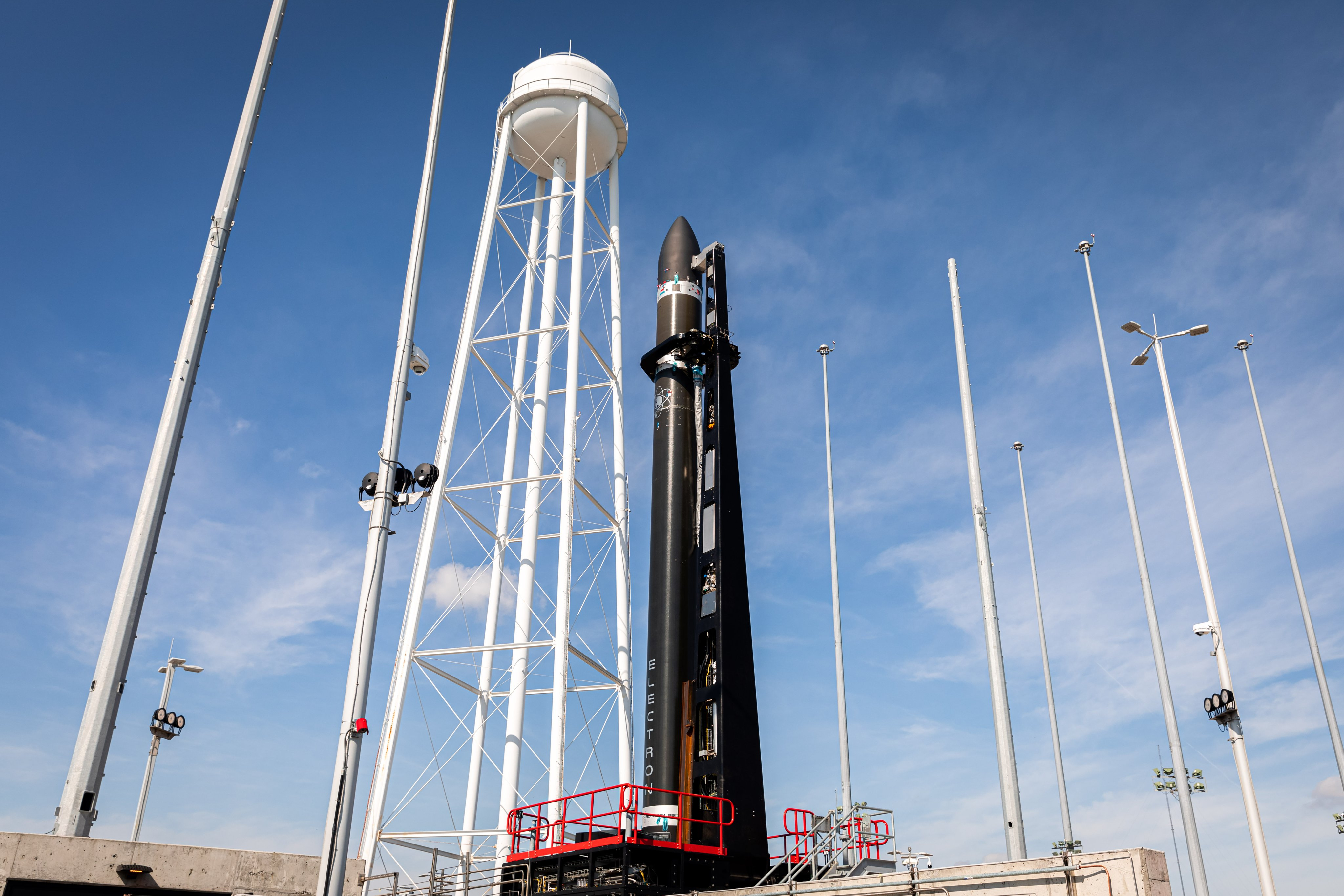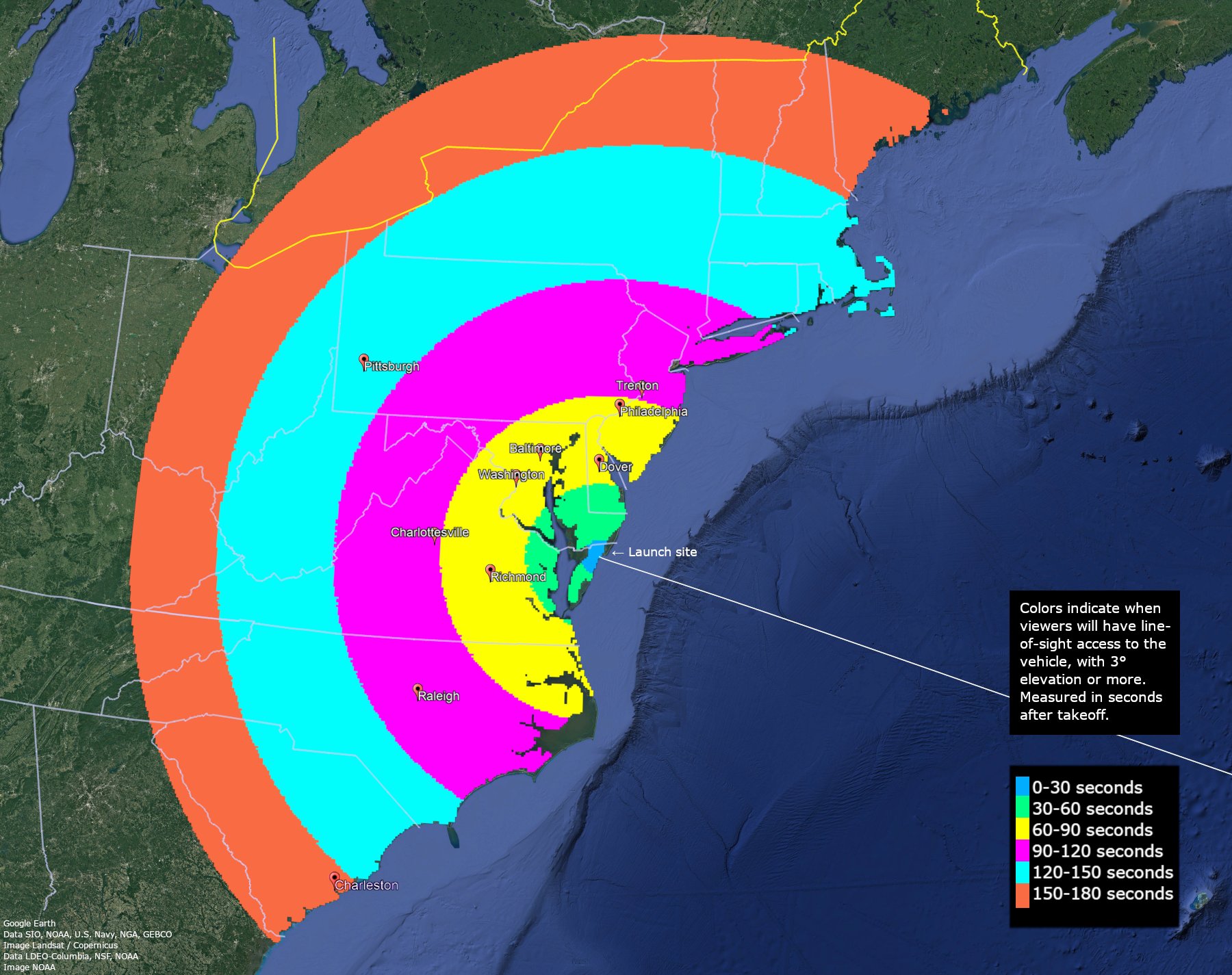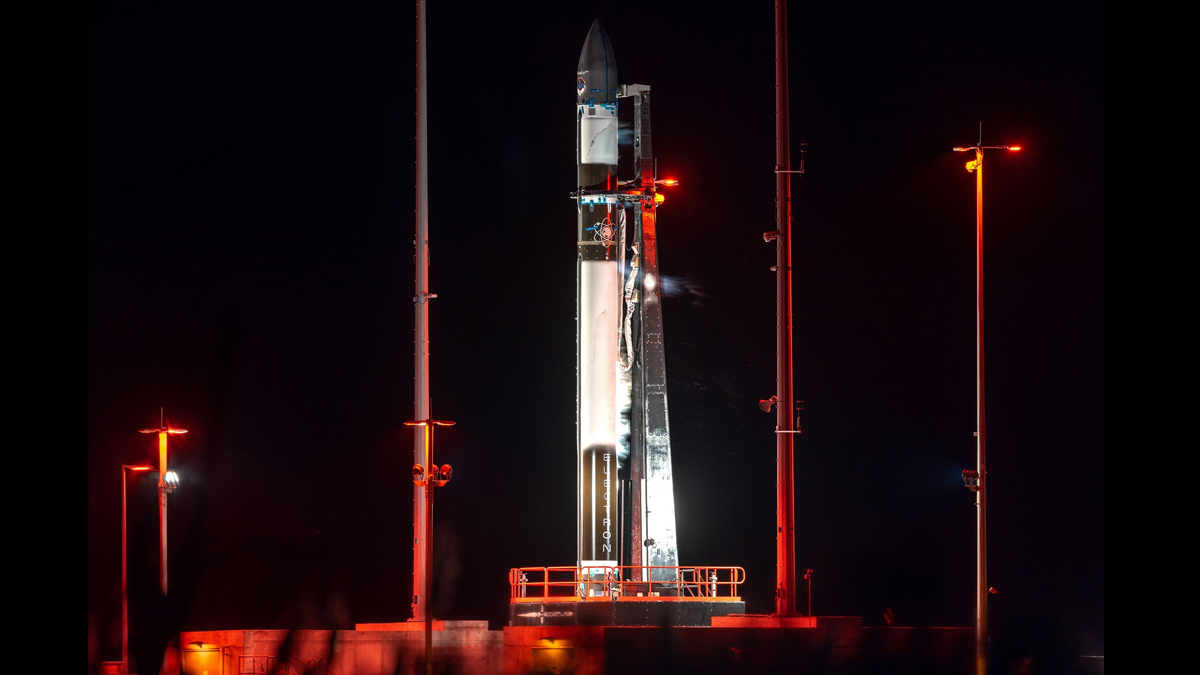Watch Rocket Lab attempt its 1st US launch with an Electron booster soon after delay [updated]
Liftoff of the Rocket Lab Electron is scheduled for 6 p.m. EST (2300 GMT), but it could fly anytime between then and 8 p.m. EST (0100 GMT).
Update for Dec. 19: Rocket Lab has called off its Dec. 18 Electron launch attempt from NASA's Wallops Flight Facility in Virginia due to high upper-level winds. The next launch date is under review as wind conditions allow, Rocket Lab wrote late Sunday night.
Due to continued strong upper-level winds forecast for tomorrow, we are standing down from a Dec 19 launch attempt. We're assessing remaining opportunities for launch this month before holiday airspace restrictions prevent further launch attempts in Dec. Stay tuned for updates!🚀 pic.twitter.com/g8ovCsrE5QDecember 19, 2022
After years of launching rockets from New Zealand, the commercial space company Rocket Lab is ready for its U.S. launch debut.
The California-based Rocket Lab will launch its first mission from U.S. soil today (Dec. 18) from its new Launch Complex 2 at NASA's Wallops Flight Facility on Wallops Island, Virginia. The mission, which will use an Electron rocket to launch three HawkEye 360 satellites into orbit, will lift off during a two-hour window that opens at 6 p.m. EST (2300 GMT) and you can watch it live in the window above for free. Rocket Lab will begin its launch webcast about 40 minutes before liftoff.
"Obviously, this is a significant milestone for Rocket Lab," CEO Peter Beck told reporters in a prelaunch briefing on Dec. 14. "It feels great to be at this point." Rocket Lab initially aimed for a Dec. 13 launch, but pushed the liftoff back for extra checks, weather and to complete final flight paperwork.
Related: Rocket Lab's 1st US launch may be visible along East Coast on Dec. 18


Rocket Lab's 1st U.S. launch could be visible to millions along the East Coast! Here's where and when to look. If you see it, let us know with photos and comments at spacephotos@space.com!
Sunday's launch, called "Virginia Is For Launch Lovers" (a play on the state's tourism motto "Virginia Is For Lovers"), will mark the start of a new age of flexibility for Rocket Lab as it aims to serve launch customers around the world. The company worked with NASA at Wallops, as well as the Mid-Atlantic Regional Spaceport overseeing commercial launches from Wallops, to develop the new pad.
Until now, Rocket Lab has used its two pads at its Launch Complex 1 on the coast of New Zealand's Mahia Peninsula to fly missions. A U.S. launch pad will allow the company to launch missions for customers who require a U.S.-based launch, like government or military customers, Beck has said.
Get the Space.com Newsletter
Breaking space news, the latest updates on rocket launches, skywatching events and more!
Rocket Lab opened its Launch Complex 2 in 2019 and originally planned to launch its first mission from there in 2020. But that first flight was delayed for two years due to holdups in NASA's development of a new autonomous flight termination system, a safety system required for Electron launches from the Wallops Flight Facility. Rocket Lab is using a version of the NASA autonomous flight termination system, which the company calls Pegasus, for its Electron flights.
David Pierce, NASA's director of the Wallops Flight Facility, told reporters that errors discovered in the NASA system's software, and subsequent testing by the space agency, U.S. Space Force and the Federal Aviation Authority, were the reasons for the delay. NASA and the FAA completed their certification of the system before Sunday's launch attempt, and signed off on final launch paperwork on Saturday (Dec. 17).
"It's been nothing short of a Herculean effort to get us to this point, which I view as a turning point in launch range operation, not just at Wallops, but across the United States," Pierce said.

Rocket Lab's Virginia Is For Launch Lovers mission is the first of three flights for the Virginia-based HawkEye 360 company, which is building a constellation of small satellites for radio frequency surveillance. Under a multi-launch agreement that HawkEye 360 struck in April, Rocket Lab will loft 15 of the small satellites into orbit by 2024.
"These missions will grow HawkEye 360’s constellation of radio frequency monitoring satellites, enabling the company to better deliver precise mapping of radio frequency emissions anywhere in the world," Rocket Lab wrote in a mission description.
We’re ticking off some big firsts for Electron this week:✅ First mission from U.S. soil✅ First mission for @hawkeye360✅ First mission with an Autonomous Flight Termination System at WallopsVirginia Is For Launch Lovers flying NET Dec 15. Stay tuned for weather updates pic.twitter.com/P7Dlq0X01hDecember 13, 2022
Rocket Lab eventually aims to launch one Electron mission a month from its Wallops pad. The company is also building a new, larger reusable rocket called Neutron that will also lift off from the U.S. launch site. The first flight of that rocket is expected for no earlier than 2024.
Beck said Rocket Lab's launch team has already learned from the processing of its first mission at Wallops (rocket components are shipped in a container to the site) and that the basics of preparing a rocket at the new U.S. pad will carry over to the new Neutron program. Rocket Lab is also building a Neutron rocket manufacturing facility in Virginia.
"I think, you know, there's been a lot of learnings from that," Beck said. "The next few launches will be significantly more streamlined."
But for now, he added, Electron needs to ace its first flight.
"The rocket is ready and it's on the pad," Beck said. "The team is ready and it's time to fly."
Email Tariq Malik at tmalik@space.com or follow him @tariqjmalik. Follow us @Spacedotcom, Facebook and Instagram.
Join our Space Forums to keep talking space on the latest missions, night sky and more! And if you have a news tip, correction or comment, let us know at: community@space.com.

Tariq is the Editor-in-Chief of Space.com and joined the team in 2001, first as an intern and staff writer, and later as an editor. He covers human spaceflight, exploration and space science, as well as skywatching and entertainment. He became Space.com's Managing Editor in 2009 and Editor-in-Chief in 2019. Before joining Space.com, Tariq was a staff reporter for The Los Angeles Times covering education and city beats in La Habra, Fullerton and Huntington Beach. In October 2022, Tariq received the Harry Kolcum Award for excellence in space reporting from the National Space Club Florida Committee. He is also an Eagle Scout (yes, he has the Space Exploration merit badge) and went to Space Camp four times as a kid and a fifth time as an adult. He has journalism degrees from the University of Southern California and New York University. You can find Tariq at Space.com and as the co-host to the This Week In Space podcast with space historian Rod Pyle on the TWiT network. To see his latest project, you can follow Tariq on Twitter @tariqjmalik.









